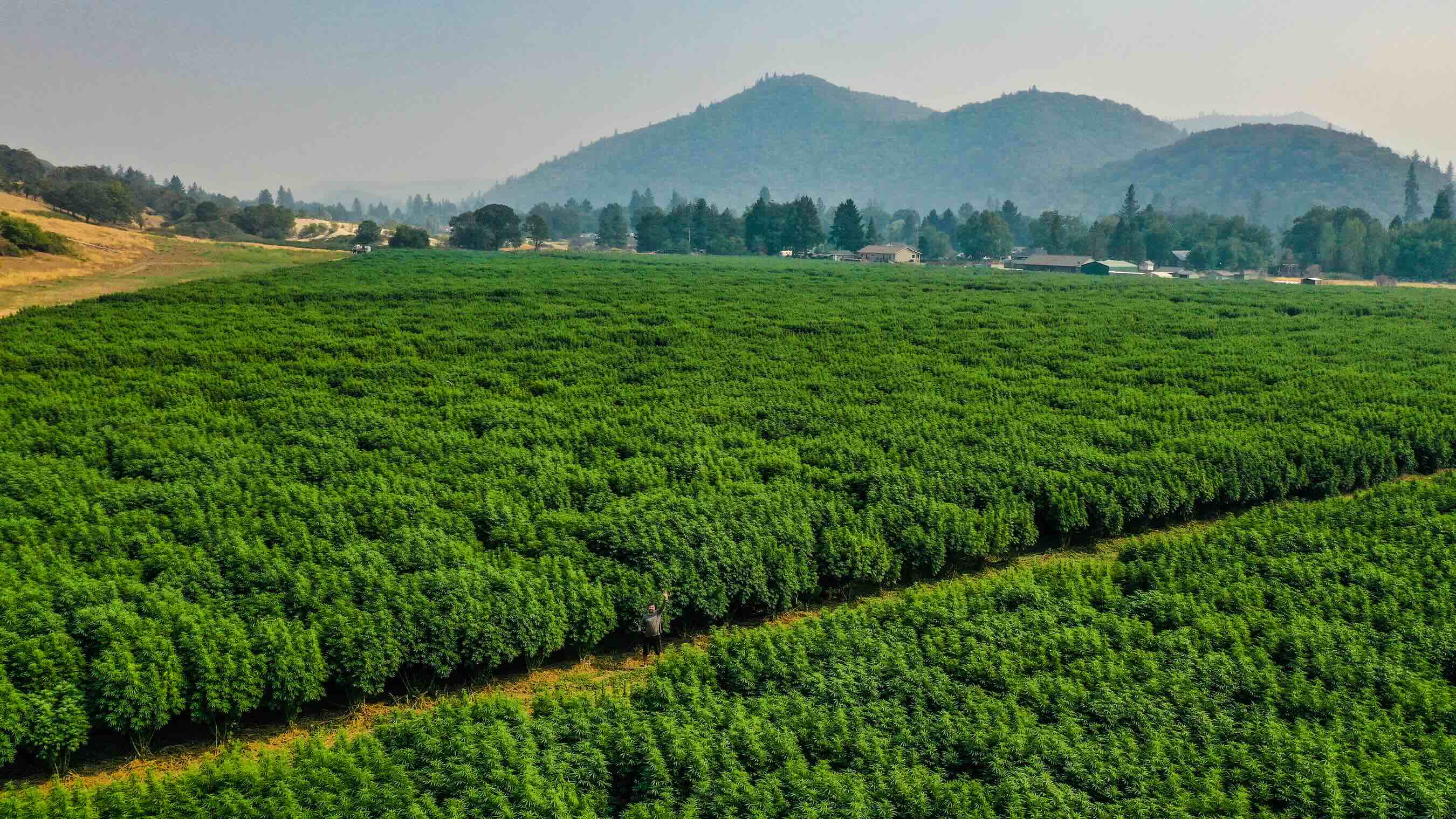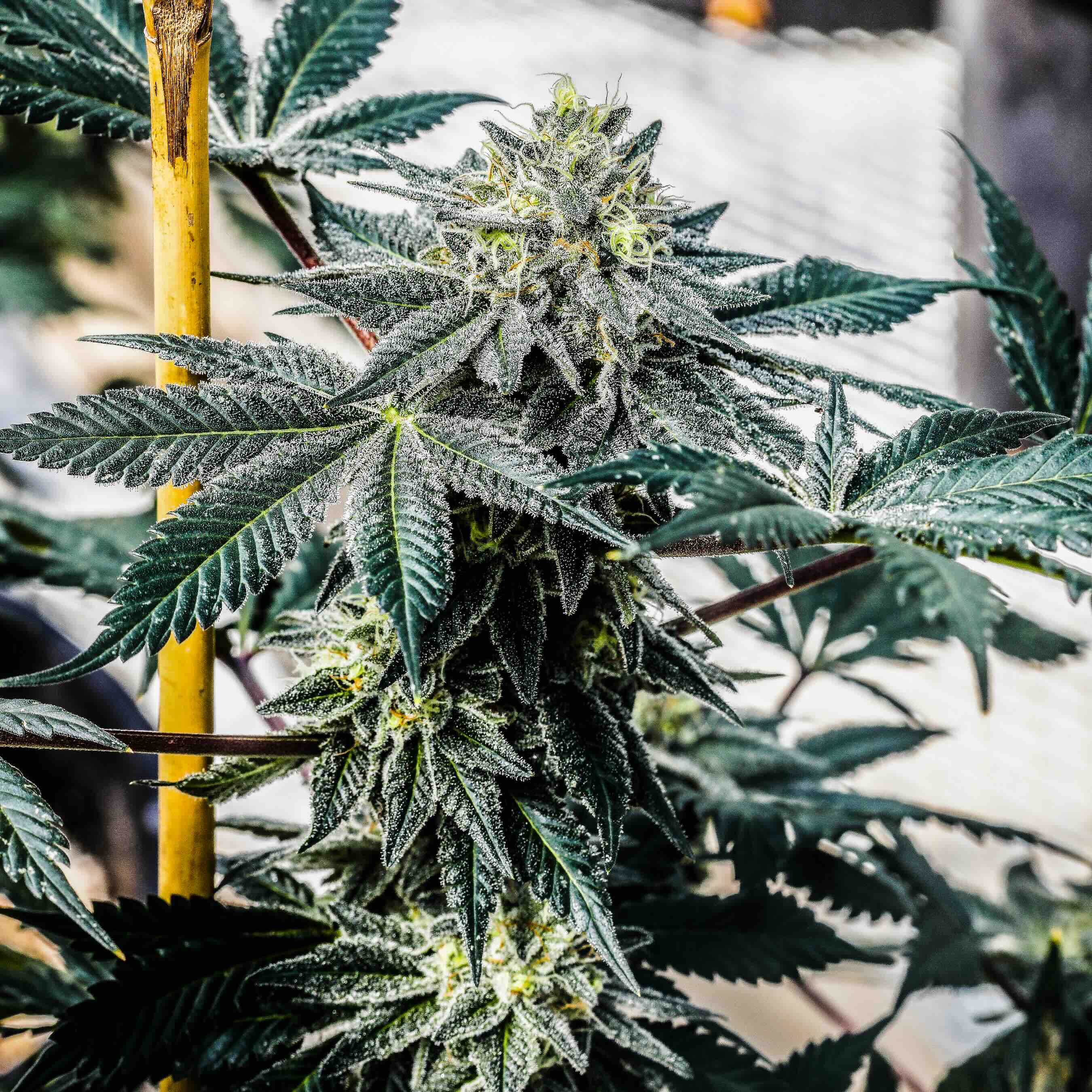INDUSTRY FIRST
The Magic of Triploid Cannabis

In 2020 Oregon CBD pioneered the first triploid cannabis seed varieties.
This breakthrough from our breeders follows behind a lengthy list of crops that make use of this agronomical advancement - from seedless watermelons to grapes to citrus and hops. If you have ever eaten a banana - you have enjoyed a triploid. Triploids just make bigger and better fruits and flowers - and without all the seeds!
Our lineup includes a wide array of THC, THCV, CBD, CBDV, and CBG rich triploid cannabis seeds that offer growers game changing advantages - and we believe polyploidy is the future of cannabis.
Why?
Not only are these varieties extremely difficult to pollinate and produce seed, but they also show significant increases in production, aroma, and overall aesthetics. This giant leap forward for cannabis producers unlocks bigger production, flavor, and aroma not possible before - while greatly reducing the risk of seeded crops.
Triploids are extremely difficult to pollinate. Only under very heavy pollen pressure will they even produce seed, and at a small fraction of what a diploid would produce.
Since 2021 Cornell University has been trialing our triploids interplanted with grain and fiber crops. Even under this absolute inundation of pollen hardly replicable in nature, triploids produce a very small amount of seed. As a plus, cannabinoid contents of triploid plants are hardly effected even when lightly seeded. Check out the data here!
For growers in areas with populations of ditch weed, forgotten fields, or fiber crops - triploids can be a season saver. The pollen that comes off any occasional hermaphrodite flower on a triploid is also nearly useless - for indoor producers who might miss one - they are a room saver.
For us, we've been most impressed by the quality and quantity of flowers that they produce. Triploids are beasts both indoors and out!
In trials, our triploid cannabis varieties produced between 30-100% more flower than their diploid counter parts. The biggest improvements were seen in autoflowers where we saw yields go from around 150 grams per plant average to almost 400 grams per plant. In our photoperiod lines we saw an easy 30% increase.
It's impossible to ignore how much frostier flowers are on triploids, with resin that extends further down sugar leaves than on traditional diploids. In side-by-side comparisons, you can see the difference on plants. Triploids OOZE resin.
That said, despite the aesthetic differences, there is no quantifiable difference in cannabinoid production between diploids and triploids.
Aroma wise, our triploids far surpass their diploid counterparts. Researchers are realizing that terpenes only account for about 50% of the aromas in cannabis. With this in mind it makes it extremely difficult to quantify aroma - but you can smell and taste the difference between diploids and triploids. Studies have shown a 50% increase in aroma compounds in triploid hops and cannabis is likely in the same boat.
Triploids just produce more of everything.
We are incredibly proud of our THC, THCV, CBD, CBDV, and CBG triploid lineup - but many are in limited numbers.
Do not miss them!
Curious of how these non-GMO varieties were made? Read on.
Diploid vs. Triploid
2x on the left vs 3x on the right


So what is a triploid cannabis plant?
Cannabis in the wild is almost exclusively a diploid (2n) species. In diploids, every plant receives one set of chromosomes from each parent. Though rare, spontaneous mutations can occur that result in a doubling of the diploid genomes and lead to tetraploid (4n) individuals even in controlled breeding populations.
Dr. Hsuan Chen and Brendan Rojas, research plant breeders at Oregon CBD, designed a series of experiments to treat diploid cannabis tissue with compounds known to inhibit cell division. The process approximates the tetraploid-inducing events that occur in nature at a very low rate, but does so (now, after many experiments) in a more consistent manner. Treated plants must be screened using a flow cytometer--a device that can measure the physical size of a plant genome--and compared to their diploid counterparts to detect the desired doubling of genome size. Success results in tetraploids: plants with four sets of homologous chromosomes (4n) and an identical doubled version of the mother. This screening process is repeated a number of times in subsequent generations of cuttings to prevent reversion to the diploid state.
Tetraploid cannabis plants have been described by two other research groups (Mansouri and Bagheri 2017 and Parsons et al. 2019) and their findings mirror ours; distinct morphological changes and increased nutrient consumption are apparent, but chemical composition (ratios and total amounts produced) is relatively unchanged--albeit with a marked increase in aromatic compounds. So far, evidence suggests that tetraploids offer little if any performance increase over diploids, with the exception of louder olfactory notes.
The game-changer for farmers happens when tetraploids (4n) are crossed with diploids (2n); the resulting seed carries 2 copies of chromosomes from the tetraploid parent and 1 set from the diploid parent (3n). This traditional plant breeding process is well documented and has been used to improve many other crops, particularly those where seedless characteristics, essential oil production, and increased biomass are valuable agronomic traits. We are able to offer this revolutionary advancement through ploidy improvements on a wide variety of cannabis chemotypes - making for one of the most significant advancements in the history of modern cannabis breeding.
Whats next? We can't wait to show you tetraploid cannabis!

Introducing
Triploid Cannabis at Oregon CBD
The first commercial triploid cannabis varieties were bred by Oregon CBD - and now released to the public through GTR Seeds. These triploid cannabis varieties show bulked up production, increased resin, and are nearly seedless even under heavy pollen pressure. Check out the science behind the process with Seth Crawford.

